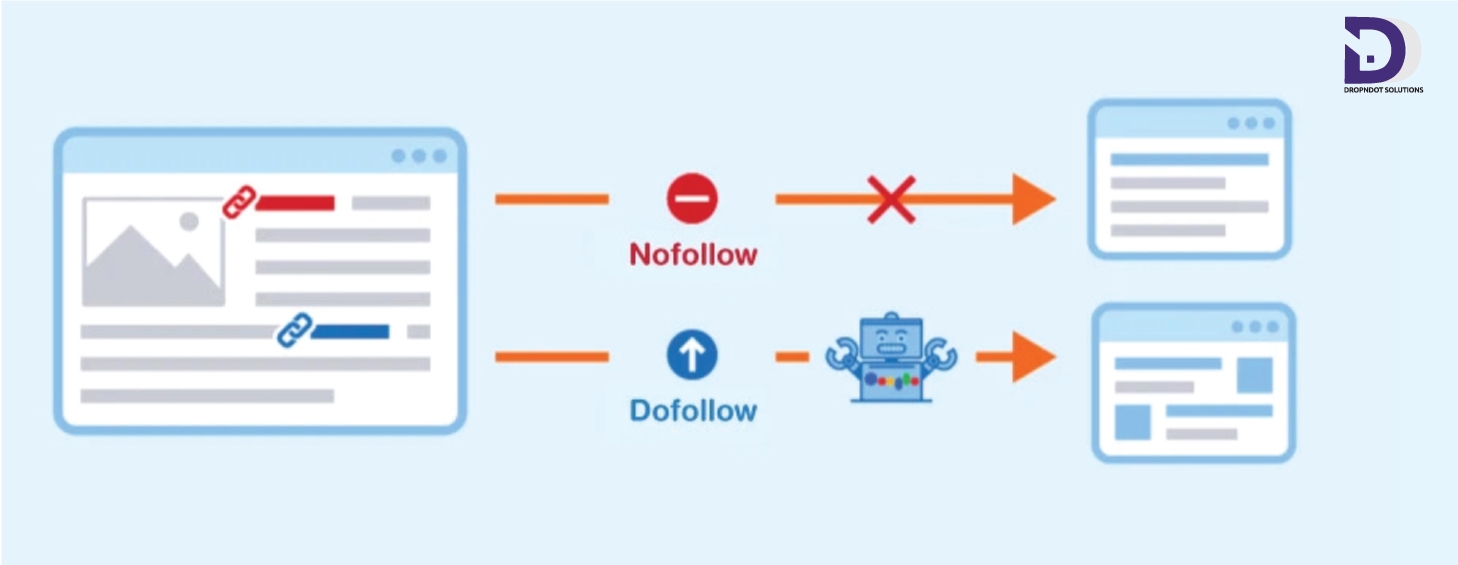A Comprehensive Guide to Finding Nofollow and Dofollow Links on a Website

- tutorial
Understanding the distinction between nofollow and dofollow links is crucial for anyone involved in website management, SEO (Search Engine Optimization), or digital marketing. These link attributes play a pivotal role in determining a website’s search engine ranking and overall online visibility. In this comprehensive guide, we will delve deep into the world of nofollow and dofollow links, explaining what they are, why they matter, and how to find them on a website. By the end of this article, you’ll be well-equipped to navigate the complex landscape of website linking.
1. What Are Nofollow and Dofollow Links?
1.1 Nofollow Links
Nofollow links are HTML attributes used to instruct search engines not to pass any link juice or “authority” from one webpage to another. These links are typically used when you don’t want to endorse the linked content or when you want to avoid potential penalties for linking to low-quality or spammy websites. The syntax for a nofollow link is:
<a href="https://example.com" rel="nofollow">Anchor Text</a>1.2 Dofollow Links
Conversely, dofollow links are standard HTML links that allow search engines to follow them and pass link authority from one page to another. By default, all links are considered dofollow unless specifically marked as nofollow. The syntax for a dofollow link is:
<a href="https://example.com">Anchor Text</a>2. Why Do Nofollow and Dofollow Links Matter?
Understanding the importance of these link attributes is essential for various reasons:
2.1 SEO Impact
Dofollow links are considered votes of confidence by search engines. When reputable websites link to your content with dofollow links, it can significantly boost your website’s search engine ranking.
Conversely, nofollow links do not pass link authority. While they may still generate traffic and offer value, they do not contribute directly to SEO.
2.2 Spam Prevention
Nofollow links are a tool to deter spammers and prevent link manipulation. They discourage low-quality websites from benefiting from legitimate websites’ link authority.
2.3 User Experience
Properly labeling nofollow links can enhance the user experience by signaling which links are trustworthy and which ones might lead to unverified or potentially harmful content.
3. How to Manually Inspect Links for Nofollow and Dofollow Attributes
You can manually inspect links on a website by right-clicking on a link and selecting “Inspect” or “Inspect Element” from your browser’s context menu. This opens the browser’s Developer Tools, which will display the HTML source code for the selected link.
Here’s how to identify nofollow and dofollow links manually:
- Right-click on the link you want to inspect and choose “Inspect” or “Inspect Element.”
- In the Developer Tools, locate the link in the HTML source code.
- Look for the
relattribute within the<a>tag. If it contains “nofollow,” the link is nofollow; if it’s absent or contains other values, it’s dofollow.
<a href="https://example.com" rel="nofollow">Anchor Text</a>This method is suitable for inspecting individual links, but it can be time-consuming for larger websites.
4. Using Browser Extensions for Link Analysis
Browser extensions can streamline the process of identifying nofollow and dofollow links. Here are some popular browser extensions that can help:
4.1 NoFollow
The NoFollow browser extension highlights nofollow links on a webpage. After installation, it adds a color border around nofollow links, making them easy to spot.
4.2 Link Checker Extensions
Some browser extensions, like Check My Links for Google Chrome, can check all links on a webpage and highlight any broken or nofollow links. This is especially useful for link auditing.
5. Website Crawlers and Link Checker Tools
Website crawlers and link checker tools are efficient ways to analyze all the links on a website quickly. These tools can provide a comprehensive overview of a site’s link profile, including information about nofollow and dofollow links.
Some popular tools include:
5.1 Screaming Frog SEO Spider
Screaming Frog is a powerful website crawler that can identify nofollow and dofollow links, as well as provide other valuable SEO insights. It offers both free and paid versions.
5.2 Ahrefs
Ahrefs is an all-in-one SEO tool that can analyze a website’s link profile, including the type of links (nofollow or dofollow), their quality, and much more. Ahrefs requires a subscription but offers a free trial.
6. Analyzing Link Attributes in HTML Source Code
If you need to analyze links on a specific webpage or a few pages, you can inspect the HTML source code. Here’s how to do it:
- Visit the webpage you want to analyze.
- Right-click on the page and select “View Page Source” or “Inspect.”
- In the HTML source code, use the “Find” or “Search” feature (usually Ctrl + F or Command + F) to search for “nofollow.” If found, it indicates a nofollow link.
- To find dofollow links, look for
<a>tags without the “rel” attribute containing “nofollow.”
7. SEO Audit Tools for a Comprehensive Analysis
If you’re conducting a thorough SEO audit of your website or someone else’s, you can use SEO audit tools that provide a complete overview of the site’s link profile. These tools not only identify nofollow and dofollow links but also assess other critical SEO factors.
Some popular SEO audit tools include:
7.1 SEMrush
SEMrush offers an extensive suite of SEO tools, including a site audit feature that identifies nofollow and dofollow links. It also provides insights into keywords, rankings, and more.
7.2 Moz Pro
Moz Pro offers link analysis tools that help you identify the types of links on your website, including nofollow and dofollow links. It also provides domain authority and other important SEO metrics.
8. Conclusion
In conclusion, understanding the difference between nofollow and dofollow links is essential for effective SEO and website management. While nofollow links may not directly boost your search engine ranking, they play a crucial role in maintaining a healthy link profile and preventing spam. Dofollow links, on the other hand, are the ones you want to earn from reputable sources to enhance your SEO efforts.
To find nofollow and dofollow links on a website, you can use a variety of methods, including manual inspection, browser extensions, website crawlers, and SEO audit tools. Each method has its advantages, so choose the one that best suits your needs and the scale.
share on
recent post
let’s build website together
call now +8801716855340get in touch! to know what we do for you.
We Are Solution-Driven And Like To Talk About Challenges. We Are Keen Listeners Too. Talk To Us And Get In Touch With The Experts In The Respective Field.




